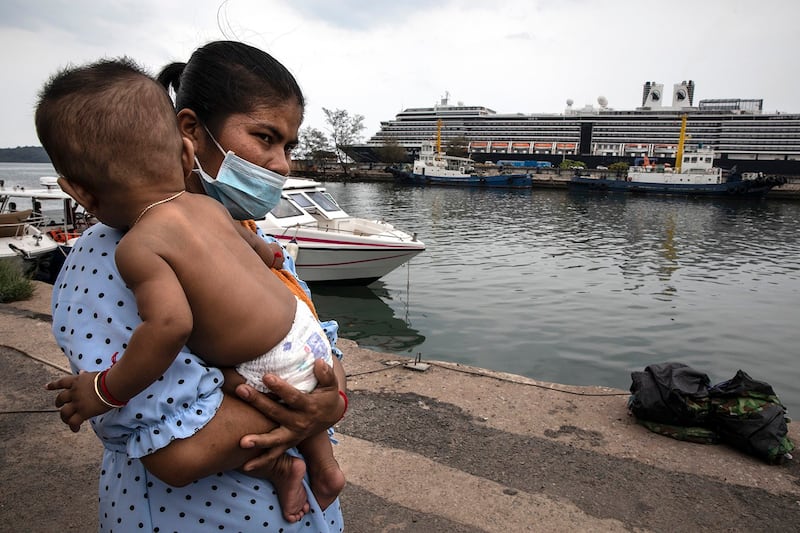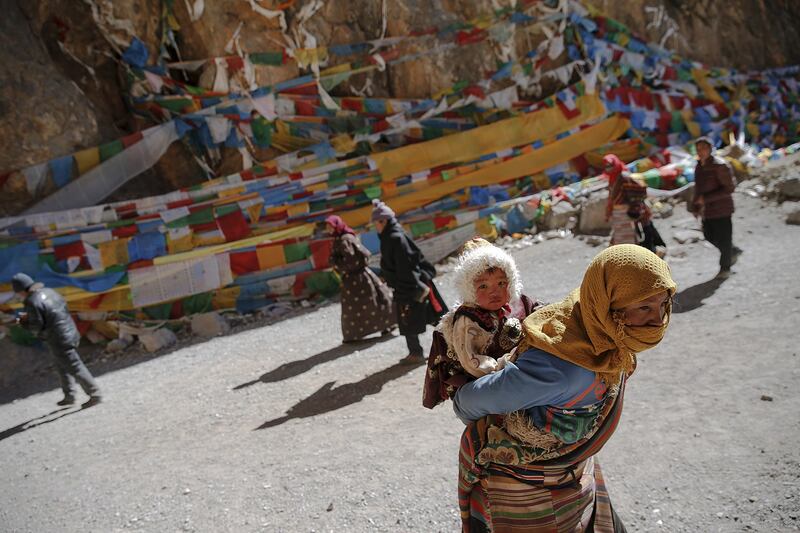Myanmar: Mothers are paying the price of armed conflict and social crisis
In Myanmar, where the political and economic landscape is in turmoil, women are facing challenges unlike any in Asia. Among them, married women and mothers are fleeing a civil war under dire circumstances.
With one of the highest infant mortality rates in the region – 32 deaths per 1,000 live births, according to the UN – little wonder that women who spoke to RFA said they were hesitant to have children if they could make the choice.
"I don't have any plans to have a child,” said Thae Oo, a newlywed living in Yangon. Though there is currently no fighting in Yangon, “due to the situation in the country, it is not possible to have a child because the income situation is getting tighter every month.
“In normal times, there are no difficulties, but this time, I am struggling to survive, so I decided not to bring a child into this world because I think it shouldn't be a hardship to my child," she added.
Indeed, for too many mothers in Myanmar, hardship is only followed by the worst possible outcome. As of 2022, the latest year for which UN figures are available, at least 382 children have been killed in its civil war.
Cambodia: Poverty and poor care make motherhood highly risky
According to the World Bank, Cambodia has the highest maternal mortality rate in East and Southeast Asia, with some 218 women dying in childbirth for every 100,000 deliveries.
Though Cambodian women are having enough children to sustain population growth, childbearing can be a risky endeavor and some women would not have children if they could avoid it. Poverty is the main driver, these women told RFA Khmer.

An Sokhim’s first pregnancy in Phnom Penh was unplanned and stressful. “I did not have any money to pay for ultrasound,” she said. She could only afford to eat dry noodles throughout her pregnancy as her husband was sick and could not work, and she worried for the health of her child. She had no idea when she would deliver, because she had not been examined by a doctor.
Five women in rural Cambodia who work as garbage pickers or migrant laborers told RFA Khmer they wish to avoid pregnancy because they are too poor and have no regular income. If they have children, they have to drop out of school to help support their families – a “miserable” situation, they said.
Although the Cambodian government has urged women to have more children, the rural women RFA spoke to said they would abort unintended pregnancies. They would not have the money to deliver the babies, anyway: in Cambodia, when you have no money, you are not welcomed by doctors, several said.
Tibet: Culture, policy and economics collide when thinking about motherhood
For centuries, Tibetan women have embraced motherhood as ‘the expected norm,’ with the act of bearing children regarded as one of ‘conscious intention.’ But now, less so.
Today, women both inside Tibet and in the exile community are increasingly weighing their choice to become mothers or not, how many children to have, and at what stage of their life.
Several women in the exile Tibetan community told RFA that they view motherhood as fundamental to enabling the preservation of their traditions and values to a new generation of Tibetans outside their homeland.
“For many people, including myself, the desire to carry forward the family legacy is a significant motivator in choosing to have children,” said U.S.-based Tenzin Dasel, 42, and mother of three.

But inside Tibet, where family planning is formally controlled by Beijing, women are having fewer children, according to publicly available data – despite the Chinese government liberalizing policy.
A woman in her 60s living in Tibet told RFA that when she was having children and births were restricted, she was pressured into undergoing sterilization after having her third baby.
But a young mother in her 20s living there now said she had no plans to have another child after her first because the cost of child rearing is so high – even though the government now encourages women to have three children.
China: For many, the cost of motherhood doesn’t add up
In late May 2021, shortly after unveiling the results of the country’s latest census, the Chinese government unveiled a revision to its prevailing population control policy. Couples would now be allowed to have three children - a further relaxation of the decades-old “One Child policy” that had already been amended in 2013 to a “two-child” policy.
The pressing issue was a significant drop in fertility. In 2020, there were a mere 12 million births recorded in China, a decline for the fourth consecutive year. The fertility rate for the year stood at 1.3 children per woman, well below the 2.1 threshold required for sustaining population growth.

But government encouragement was met with derision. "I can't give birth [again]! Raising one is already like having a money shredding machine in the house, how can I have another?" asked Mrs Li, who works in the service industry in Changsha, who had a five-year-old daughter.
Qiu Xiaojia had been married to her husband for three years and said she gets excited when she sees a baby, but the reality is that she cannot afford to give birth or raise one. "Now that we have a house, our mortgage is even higher than my monthly salary. How can I afford to have a child? Not to mention three children, I don't even have the money to have one,” she said.
A poll from the state news agency Xinhua asked: “The three-child policy is coming, are you ready?" The overwhelming answer from respondents was: not even a little bit.
The poll was quickly deleted from Weibo, the social media platform, afterward.
Reported by Jane Tang for RFA Mandarin (in 2021) and by Dorjee Tso and Tenzin Dickyi for RFA Tibetan. Edited by Boer Deng and Paul Eckert.
